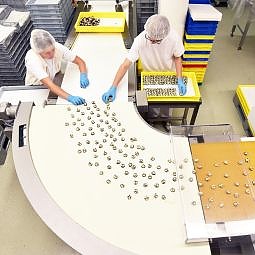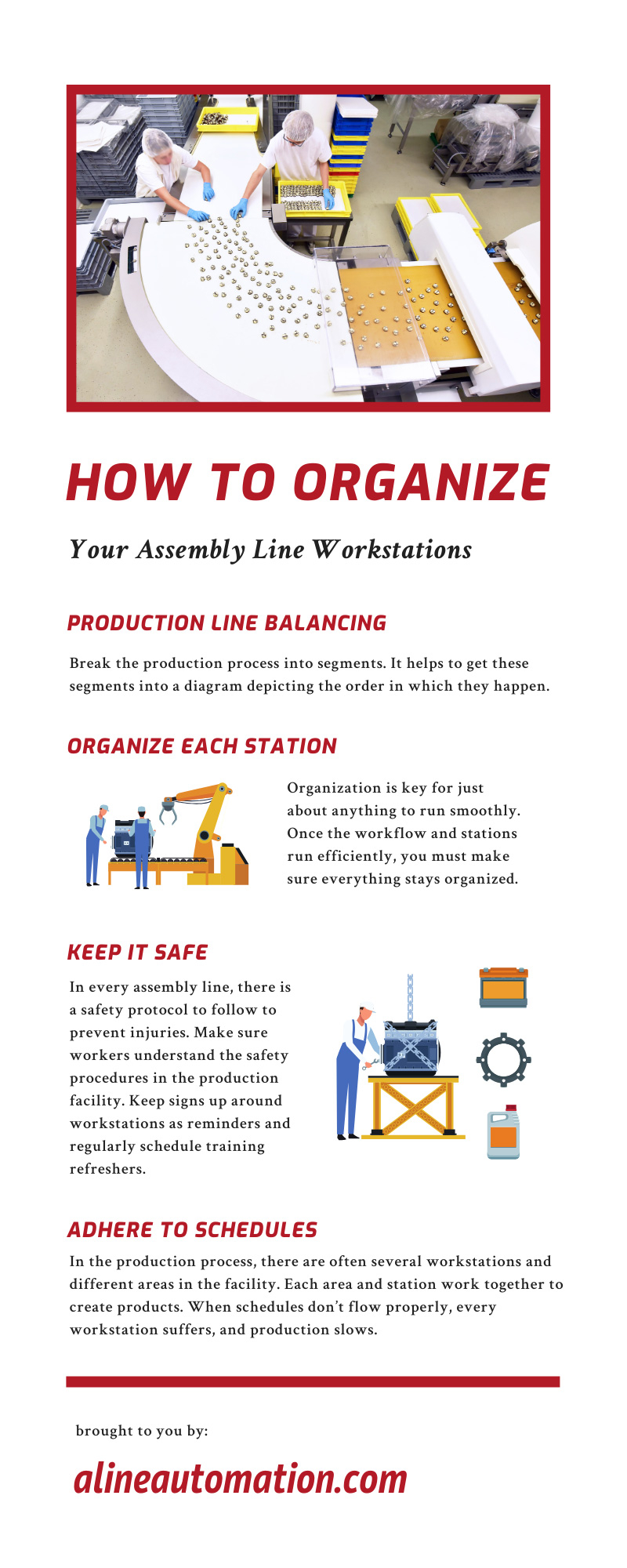
An assembly line in mass production processes helps the workflow run as smoothly and efficiently as possible. They usually consist of several workstations, with each station having a job to fulfill. If one workstation is disorganized or not working, the rest of the line might back up and not complete its tasks. Follow along as we discuss how to organize your assembly line workstations for an effective production line.
When considering assembly line production, the first thing to discuss is production line balancing, which refers to the number of workers, machines, and stations needed. When these numbers are correct and well-planned, it brings balance to the line, and the workflow is optimal. When the balance is off, so is the assembly line. Let’s look at some steps to follow when trying to achieve assembly line balancing.
Organization is key for just about anything to run smoothly. Once the workflow and stations run efficiently, you must make sure everything stays organized. Here are some tips for organized workstations:
Keep these thoughts in mind during the assembly line design and production phase. It’s best to plan out every detail rather than to have to go back and redesign.
In every assembly line, there is a safety protocol to follow to prevent injuries. Make sure workers understand the safety procedures in the production facility. Keep signs up around workstations as reminders and regularly schedule training refreshers.
In the production process, there are often several workstations and different areas in the facility. Each area and station work together to create products. When schedules don’t flow properly, every workstation suffers, and production slows.
The only way to avoid this is to adhere to strict schedules. A workstation can’t shut down if things are to run smoothly. You must time breaks, order of procedure, and maintenance times correctly.
The creation of assembly lines is for the purpose of mass production. People have used them for hundreds of years, and they’re common in manufacturing. Let’s look at several of the benefits of using an assembly line with workstations.
There’s no getting around it—you can’t produce as quickly without an assembly line. Assembly lines allow for multiple people and workstations to perform one specific task repeatedly rather than a smaller number of workers and stations trying to do it all. This allows workers to finish their tasks quicker, ultimately producing more products.
Although it’s an investment to install an assembly line, the result is an improved profit margin. Labor costs are lower when you have training in place for everyone to perform one particular task rather than one person performing every task. This creates a lower cost per unit during production.
When designed correctly, each workstation in the assembly line produces the same product over and over, allowing greater odds that the parts and units all look and feel the same. The likelihood of differences decreases.
When done correctly, assembly lines and workstations are easy to upgrade when necessary. Choose a company to design your assembly line and workstations that is infamous for its ability to make changes and additions down the road. If the line is inflexible, you’ll find that cost is a hindrance, as you’ll have to start from scratch each time.
When organizing assembly line workstations, keep in mind line balancing, the organization of each separate workstation, safety procedures, and schedules. During the design process for the assembly line, it’s important to test-run it until it’s right.
At A-Line Automation, we provide t-slot aluminum framing solutions and assembly automation components for flexible and durable assembly line options for your warehouse workstations. We understand the importance of an effective assembly line and the need to meet height, positioning, and lighting requirements. Contact us, and let’s discuss your vision for your workstation and create a productive assembly line.
